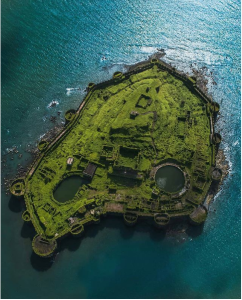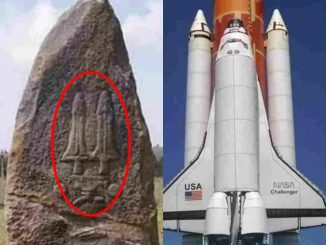A Legacy Cast in Stone
Nestled on the rugged coast of Maharashtra, India, the formidable fort of Murud-Janjira stands as a monumental testament to the indomitable spirit of its guardians—the Siddi. This 16th-century stronghold, with its roots deeply embedded in the rich tapestry of Indian history, tells a story of resilience, strategic brilliance, and cultural amalgamation. Ruled by Abyssinian Muslims known as “Siddi,” Murud-Janjira paints a picture of a fortress that remained unconquered through the ages, resisting the advances of the Nizamshahis, Marathas, Portuguese, Dutch, French, and even the English, until its integration into the Indian Union in 1947.
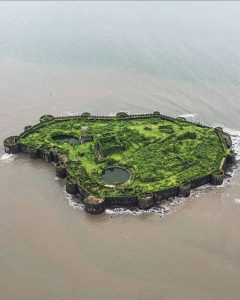
An Architectural Marvel and Strategic Masterpiece
Murud-Janjira is not just remarkable for its undefeated record but also for its architectural and engineering feats. Built on an oval-shaped rock off the Arabian Sea coast, the fort’s walls rise defiantly out of the water, towering above the waves, a silent sentinel guarding the secrets of the past. Its construction reflects a blend of local and Abyssinian influences, with towering bastions, intricate gateways, and robust defensive mechanisms designed to repel the most determined of invaders.
Photographs of the fort capture the essence of its impregnable nature, with its 22 rounded bastions, still intact, whispering tales of sieges withstood and enemies repelled. The fort’s architecture cleverly incorporates natural defenses, utilizing the sea as a moat that isolates it from the mainland, making it accessible only by certain navigable routes that were zealously guarded.
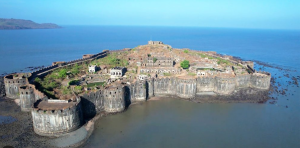
A Cultural Melting Pot
Under the Siddi’s rule, Murud-Janjira became more than just a military fortification; it evolved into a cultural haven, reflecting the diverse heritage of its inhabitants. The Siddi, descendants of Abyssinian Muslims, brought with them a rich cultural tapestry that was woven into the very fabric of the fort’s society. This blend of cultures is evident in the unique architectural styles, languages, and traditions that flourished within the fort’s walls.
The legacy of the Siddi at Murud-Janjira is a poignant reminder of the cultural exchanges that have shaped the Indian subcontinent’s history. The fort served not only as a military stronghold but also as a beacon of multicultural coexistence, where different traditions and practices coalesced into a unique identity that has endured to this day.
As we delve into the images and tales of Murud-Janjira, we are reminded of the rich tapestry of human history and the timeless lessons it offers. The fort serves as a poignant reminder of the strength found in diversity, the power of innovation, and the enduring nature of cultural heritage. In exploring ancient discoveries like Murud-Janjira, we not only uncover the past but also glean insights into the resilience, ingenuity, and unity that define humanity across ages.
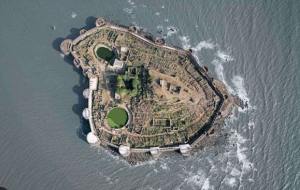
The Unconquered Fort’s Place in Modern India
Today, Murud-Janjira stands as a symbol of resistance and resilience, attracting historians, architects, and tourists drawn to its mystique and historical significance. The fort’s enduring legacy is a tribute to the Siddi rulers’ strategic acumen and the fort’s architectural grandeur. As we gaze upon images of its majestic walls and gateways, we are transported back in time, reminded of the fort’s role as an unconquerable bastion that stood firm against the tides of conquest and colonization.
In conclusion, the story of Murud-Janjira is a remarkable narrative of survival, cultural integration, and unyielding strength. As one of India’s most invincible forts, it embodies the spirit of a land known for its rich history and diverse heritage. The tale of the Siddi and their unconquered fortress serves as an enduring reminder of the complexities of India’s past and the resilience that characterizes its spirit. Murud-Janjira, with its untouched walls and timeless allure, continues to inspire and captivate those who seek to unravel the mysteries of India’s storied legacy.
